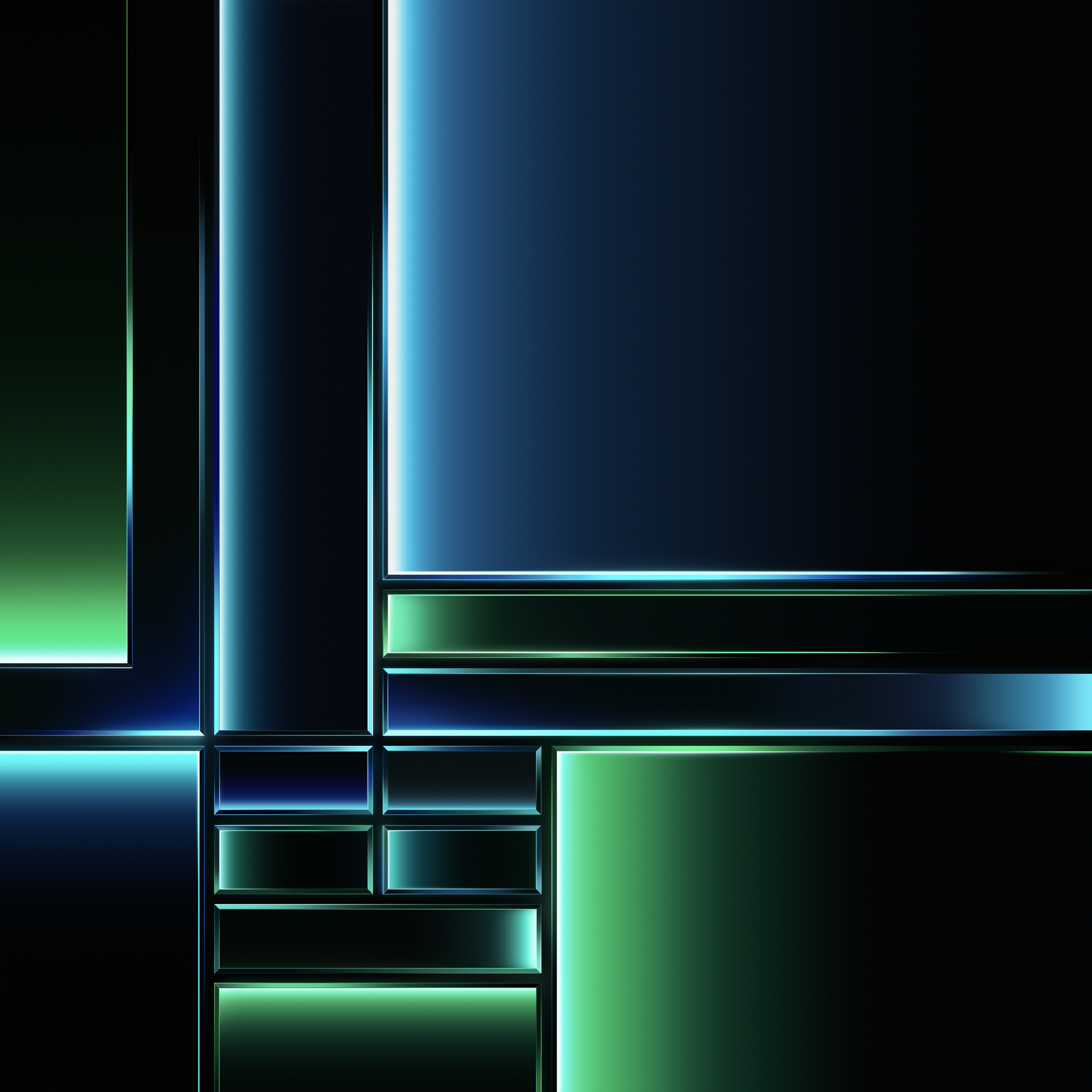-
Posts
2,343 -
Joined
-
Days Won
34
Content Type
Profiles
Forums
Events
Everything posted by Aaron44126
-
.thumb.png.e841bc17c8cca329ac53db7523663d9a.png)
Finally. Microsoft incorporates iOS into phone link.
Aaron44126 replied to kojack's topic in Mobile Devices & Gadgets
Err. Here's a new thing. https://www.macrumors.com/2023/11/16/apple-to-adopt-rcs-messaging-standard/ After years of prodding, Apple is adopting RCS "later next year" (sounds like an iOS 18 feature) which will improve the messaging experience between Apple and Android devices. -
.thumb.png.e841bc17c8cca329ac53db7523663d9a.png)
14th Gen Desktop replacement Laptops?
Aaron44126 replied to Snowleopard's topic in What Laptop Should I Buy?
Agreed. I don't even know of a 13th-gen system that meets this. The DTR market as we used to know it seems to be dead. You can find a small number of systems with 4 NVMe slots but I've never heard of one with more than that. You might be able to squeeze in one more small one (not bootable) if you repurpose a WWAN slot with an adapter. Four SODIMMs is also becoming uncommon as well (and right now that maxes out at 192 GB) and CAMM or soldered memory will probably take over as high DDR5 speeds start causing signaling issues on SODIMM slots. And, 4K display (or the taller 16:10 variant of it) is the max resolution that I have heard of in a laptop display. -
.thumb.png.e841bc17c8cca329ac53db7523663d9a.png)
Dell Fan Management — Software for controlling the Dell laptop fan speed
Aaron44126 replied to Aaron44126's topic in Dell
You have to use a command prompt (running "as administrator") to enter these commands for DellFanCmd. It is not a GUI application so it won't do anything if you just click on it. You can test if SpeedFan can control the fans properly by just manually setting the PWM in the main window. It should react differently if you set it to 0, 50, or 100. (It will not allow for more granular control of the fans than that, it is limited to the same three speeds as my app.) Automatic EC fan control does have to be disabled in order for SpeedFan to be able to do anything, and also you must activate a checkbox setting in SpeedFan configuration that says something about supporting Dell fans. -
As @Kitje said, you can swap out the keyboards (backlit/non-backlit); the system will figure out which one you have and react accordingly.
-
On my Precision 7560, I cannot use a drive in the primary drive slot (in the middle of the system). It is not stable, it disappears after a period of time, which will result in either a crash or lock-up if it is the system drive or the drive vanishing if it is not. It might come back after a reboot or it might not. I've had the motherboard replaced twice but the issue returned each time. (My current motherboard does not have the little push-button switch beneath the drive slot which was originally thought to be the cause of this.) I've been just getting by without using that slot. So. What @Rinconmike said. Put it in a different slot and see.
-
.thumb.png.e841bc17c8cca329ac53db7523663d9a.png)
No 'Apple' section in Notebook Manufacturers subforum?
Aaron44126 replied to serpro69's topic in Site Suggestions
Will be interested to see. Just because it is an ARM CPU doesn't mean it is automatically "great" in terms of efficiency and performance, though I imagine it isn't too hard to beat x86 for efficiency. Apple has shown a consistent lead of a year or more over Qualcomm in ARM chips for phones (in terms of performance), they are competitive against the top chips coming out of Intel for laptops (in terms of performance), they can even compete against mid-range laptop discrete GPUs, and right now they basically have a lock on the 3nm chips coming out of TSMC. I am hoping that we don't see third-parties produce more ARM chips that are "efficient" but not necessarily "performant" like what we have seen so far. (Qualcomm has ARM laptop chips but they don't come close to hitting the performance that either Intel or Apple deliver. Never mind actually trying to do gaming on one of those systems.) Still like I said, competition should make things better for everyone and I am really ready for ARM to shake up the laptop space. -
eGPUs!
- 6 replies
-
- 1
-

-
- usb
- usb4 version 2.0
-
(and 1 more)
Tagged with:
-
Assuming that reseating the keyboard cable didn't work, the first step would be to replace the keyboard and keyboard cable. Dell Precision M4800, M4700, M4600, M6800, M6700, M6600 all use the same keyboard. (Some Latitude E-series models use the same keyboard too.) You can get them on eBay or whatever. Note that there are backlit and non-backlit versions. If the keyboard replacement doesn't work, you're looking at motherboard replacement. To get by in the meantime, find any old USB keyboard and use that.
-
.thumb.png.e841bc17c8cca329ac53db7523663d9a.png)
Dell Fan Management — Software for controlling the Dell laptop fan speed
Aaron44126 replied to Aaron44126's topic in Dell
You can do that with SpeedFan. For SpeedFan to work, you need to enable Dell fan support in its settings, and you need to force automatic EC fan control off using Dell Fan Management (manual mode, EC fan control disabled) or DellFanCmd. -
.thumb.png.e841bc17c8cca329ac53db7523663d9a.png)
Dell Fan Management — Software for controlling the Dell laptop fan speed
Aaron44126 replied to Aaron44126's topic in Dell
You have to wait for the EC to "automatically" lower the fan speed below your threshold. 1000 is too low. The lowest speed that the EC will run the fans at before turning them off varies by system but it is probably in the 1400-1800 range. You'll want to watch the behavior and see what a typical "low" speed for your system is and then set the threshold a little bit higher than that. (If your system runs the fans at 3000 even under low load then this will probably not work out for you.) You can try turning off CPU turbo boost to lower temperatures and fan speeds. I have an article about options to toggle that on and off quickly in my sig. -
.thumb.png.e841bc17c8cca329ac53db7523663d9a.png)
Dell Fan Management — Software for controlling the Dell laptop fan speed
Aaron44126 replied to Aaron44126's topic in Dell
I wrote consistency mode to try to "lock" the fans at the minimum level (other than "off") that the EC will normally set them to. I found this to be lower than the level you get when manually setting the "low" speed. It will also automatically "unlock" them and let the fans ramp up if the temperature gets too hot. You want to set the RPM threshold slightly higher than your target speed, and the temperature threshold to where you want the fans to become locked and unlocked. If the system has not locked the fans, it will indicate why in the status bar. The Cool/Quiet/Performance modes are just using the same modes offered in Dell Power Manager. It is only supported in newer Dell systems (2015 and newer I think?). I'm not updating this program anymore. My personal PC is a Mac (zero fan issues) and my work PC is too new to support any type of manual fan control, so I literally have nothing to work on it from. -
.thumb.png.e841bc17c8cca329ac53db7523663d9a.png)
No 'Apple' section in Notebook Manufacturers subforum?
Aaron44126 replied to serpro69's topic in Site Suggestions
Qualcomm's exclusive deal to make ARM CPUs for Windows PCs will be ending next year. NVIDIA and AMD both appear to be working on ARM CPUs for Windows PCs and could have something out in 2025. This can only be a good thing... More competition encourages higher innovation and lower prices. More people using Windows on ARM will force Microsoft to make Windows on ARM better. (...Do something about being able to run applications/games that use AVX instructions?) Maybe we'll get some Windows laptops that aren't terrible. (High performance, and yet cool/quiet and long battery life when there is not a demanding load running. Hello MacBook Pro.) https://www.reuters.com/technology/nvidia-make-arm-based-pc-chips-major-new-challenge-intel-2023-10-23/ -
Guilty! https://www.theverge.com/policy/2023/11/2/23943236/sam-bankman-fried-trial-sbf-fraud-guilty Sentencing is not until ... March 28, almost five months away. Not even done. There's a second trial on more charges, also starting in March.
- 78 replies
-
- 4
-

-

-

-

-
- ftx
- sam bankman-fried
-
(and 1 more)
Tagged with:
-
.thumb.png.e841bc17c8cca329ac53db7523663d9a.png)
Is Apple finally taking gaming on macOS seriously?
Aaron44126 replied to saturnotaku's topic in Other Manufacturers
True, but I would have said something similar for the 14"/16" M2 MacBook Pros, which lived on the market for less than 10 months. Really they wouldn't have to do much besides swap in a new logic board with the new chip and leave the rest of the design the same. I don't think it is that big of a lift. (But Apple does what Apple does.)- 42 replies
-
- 1
-

-
.thumb.png.e841bc17c8cca329ac53db7523663d9a.png)
Is Apple finally taking gaming on macOS seriously?
Aaron44126 replied to saturnotaku's topic in Other Manufacturers
I'm fully expecting at least MacBook Air to be refreshed with M3 in the early part of next year, that's a popular system and I think they'd want to keep it current. But, it's not uncommon for them to skip an upgrade for some lines (see: iMac skipping M2). Also, it is seeming like M4 will just be a smaller refinement over M3, and M5 is the next "big" one (already been in development for some months), so you may well be right here.- 42 replies
-
.thumb.png.e841bc17c8cca329ac53db7523663d9a.png)
Is Apple finally taking gaming on macOS seriously?
Aaron44126 replied to saturnotaku's topic in Other Manufacturers
I was paying attention as well... Hardware accelerated ray tracing is cool, but it remains to be seen how it will perform compared to competitors. (That Myst demo that they showed looked like it was running at 10 FPS.) Mesh shaders are sort of niche right now but will probably be more and more common in high-end games soon, so good to have that out there. AV1 hardware video decode? About time. I'm a little bit bummed since I purchased my system just a few months ago and there is already an upgrade out! I sort of figured it would be another 3-6 months, and they'd do base M3 first with Pro/Max following some time later. I wonder if they're going to try to settle into a yearly cycle for "M" series chips and MacBook Pros... They already have that going for "A" series chips (iPhone CPUs); M3 is clearly related to A17, sharing all of the same new GPU features. But, meh, new features aside, the CPU performance and GPU performance improvements don't seem to be that substantial compared to M2. It is an iterative improvement. (They kept making verbal comparison to M1 rather than M2 during the presentation, though they would show M2 numbers on the screen.) They did bump it to 128GB RAM at the top, but I don't really need that much RAM. I do really like the "space black" color, though. I'm generally disappointed that there is no SSD option higher than 8TB (which has been the max in a MacBook Pro since 2019). 16 TB might be asking too much still, but they could probably cram in 10 or 12 TB. Also disappointing that the RAM and storage "upgrade" prices did not drop at all compared to M2 systems. Those SSDs don't need to cost that much. I played with the order configurator and there are some odd things in there with regards to RAM. 18GB and 36GB RAM options instead of 16GB and 32GB for M3 Pro (192-bit memory bus?). If you get the low-end M3 Max, you can pick between 36GB and 96GB but nothing in between? Too little, or too much? And the 96GB option goes away if you pick the high-end M3 Max, you have to pick between 64GB and 128GB. I also wonder if Apple will support for ray tracing in DX12 games to D3DMetal in the near future. No word on that yet.- 42 replies
-
- 1
-

-
Well, that went well. https://www.theverge.com/2023/10/30/23939639/sam-bankman-fried-cross-exam-fraud [Edit] More from today... https://www.theverge.com/2023/10/31/23940814/sam-bankman-fried-ftx-alameda-customer-funds-fraud-trial
- 78 replies
-
- 1
-

-
- ftx
- sam bankman-fried
-
(and 1 more)
Tagged with:
-
.thumb.png.e841bc17c8cca329ac53db7523663d9a.png)
Precision M6800 questions and upgrades
Aaron44126 replied to Jers6410's topic in Pro Max & Precision Mobile Workstation
Any quad-core CPU will support four memory sticks. The best would probably be Core i7-4940MX? -
Haven't tried it personally but, being on Mac now I've been paying attention to the macgaming Reddit, and it's a pretty common option offered up for playing games on Mac. People seem to agree that it is the best choice for cloud gaming, offering better video quality and lower latency than Xbox Cloud Gaming, Boosteroid, or others.
-
SBF testified yesterday, but the jury was dismissed and it was just to the judge. It was a hearing to decide what testimony would be admissible to present to the jury today. ...Nonetheless, it didn't seem to go well for him. He spent a lot of time dodging questions with word salad and had to be asked multiple times. I think he's used to be able to talk his way through interviews and whatever with nonsense, but of course here neither Sassoon nor Kaplan would let him do that. https://www.theverge.com/2023/10/26/23934195/sam-bankman-fried-self-testimony-deleted-signal
- 78 replies
-
- 1
-

-
- ftx
- sam bankman-fried
-
(and 1 more)
Tagged with:
-
.thumb.png.e841bc17c8cca329ac53db7523663d9a.png)
Dell Fan Management — Software for controlling the Dell laptop fan speed
Aaron44126 replied to Aaron44126's topic in Dell
No. There is currently no way to manually manipulate the fans in 12th gen and later systems. -
SBF is going to testify tomorrow! https://www.theverge.com/2023/10/25/23931697/sam-bankman-fried-testifying-ftx-fraud-trial (It has not been clear whether he would or not; it opens him up to cross-examination from the prosecution ...)
- 78 replies
-
- 1
-

-
- ftx
- sam bankman-fried
-
(and 1 more)
Tagged with:
-
These are fun articles on the trial proceedings. Seems like damning evidence plus inept defense for most of it. (The defense hasn't really started their side of the case yet, though.) https://www.theverge.com/2023/10/4/23903986/sam-bankman-fried-opening-statements-trial-fraud https://www.theverge.com/2023/10/5/23905665/sam-bankman-fried-fraud-trial-wang-yedidia-testimony https://www.theverge.com/2023/10/6/23906899/ftx-alameda-sam-bankman-fried-trial-gary-wang-testimony https://www.theverge.com/2023/10/10/23912036/sam-bankman-fried-ftx-caroline-ellison-alameda-research https://www.theverge.com/2023/10/11/23913665/ftx-sam-bankman-fried-fraud-trial-caroline-ellison-testimony-alameda-balance-sheets https://www.theverge.com/2023/10/12/23915108/sam-bankman-fried-ftx-alameda-caroline-ellison-lawyers https://www.theverge.com/2023/10/16/23920125/sam-bankman-fried-nishad-singh-testimony-ftx-trial https://www.theverge.com/2023/10/17/23921745/sam-bankman-fried-nishad-singh-house-loan
- 78 replies
-
- 1
-

-
- ftx
- sam bankman-fried
-
(and 1 more)
Tagged with:
-
The Windows VM performs fine but I'm not doing anything especially intensive. I use Quicken and some office-type apps. I wouldn't expect any graphically intensive to perform great in a VM. It is Windows-on-ARM, which has an x86/x64 emulator built-in that works well, but it doesn't support emulating any device drivers or low-level system apps. So, for example, I have an old Canon printer/scanner that I can't use in Windows on ARM because Canon hasn't provided an ARM driver; and, apps like Macrium Reflect or AnyDVD HD install kernel modules which won't work on Windows-on-ARM until/unless they produce an ARM version of those modules. (You'd have the same limitations on an ARM-based Windows systems like Surface Pro X.) My more intensive tasks, I have been able to run natively in macOS. (Photo work, video encoding, and gaming.) Not saying everyone should go and switch to Mac. There are notable pros and cons for sure. You'd have to examine your workload and see if it is even workable at all to start out with.
-
I have sworn off Windows as a personal OS since April. (Still use it for work; don't really have a choice.) I was on Linux for two months before getting the MacBook Pro. I am still using a Windows VM to run a few applications, though. The MacBook Pro has downsides for sure (lack of upgradeability, no numeric keypad, and generally having to get used to a new OS with new ways of doing things, different keyboard shortcuts, etc). I bit the bullet and just got a max-spec system and I think I'll be good for six years or so. I'll say that "as a laptop" it is a league above anything that I have seen from a Windows-based laptop. The mini-LED display is brilliant; the system can offer high performance when needed but is silent doesn't operate as a space heater when doing office-type work; and, it can operate on battery power three or four times longer than my Precision could, and without any throttling. I don't see myself going back. I do use Lightroom Classic and I have found the performance on macOS to be much more consistent than I'm used to on Windows, where the app always seemed to be struggling for no apparent reason. Adobe Acrobat, on the other hand, seems to behave notably better on Windows than on macOS to me.
